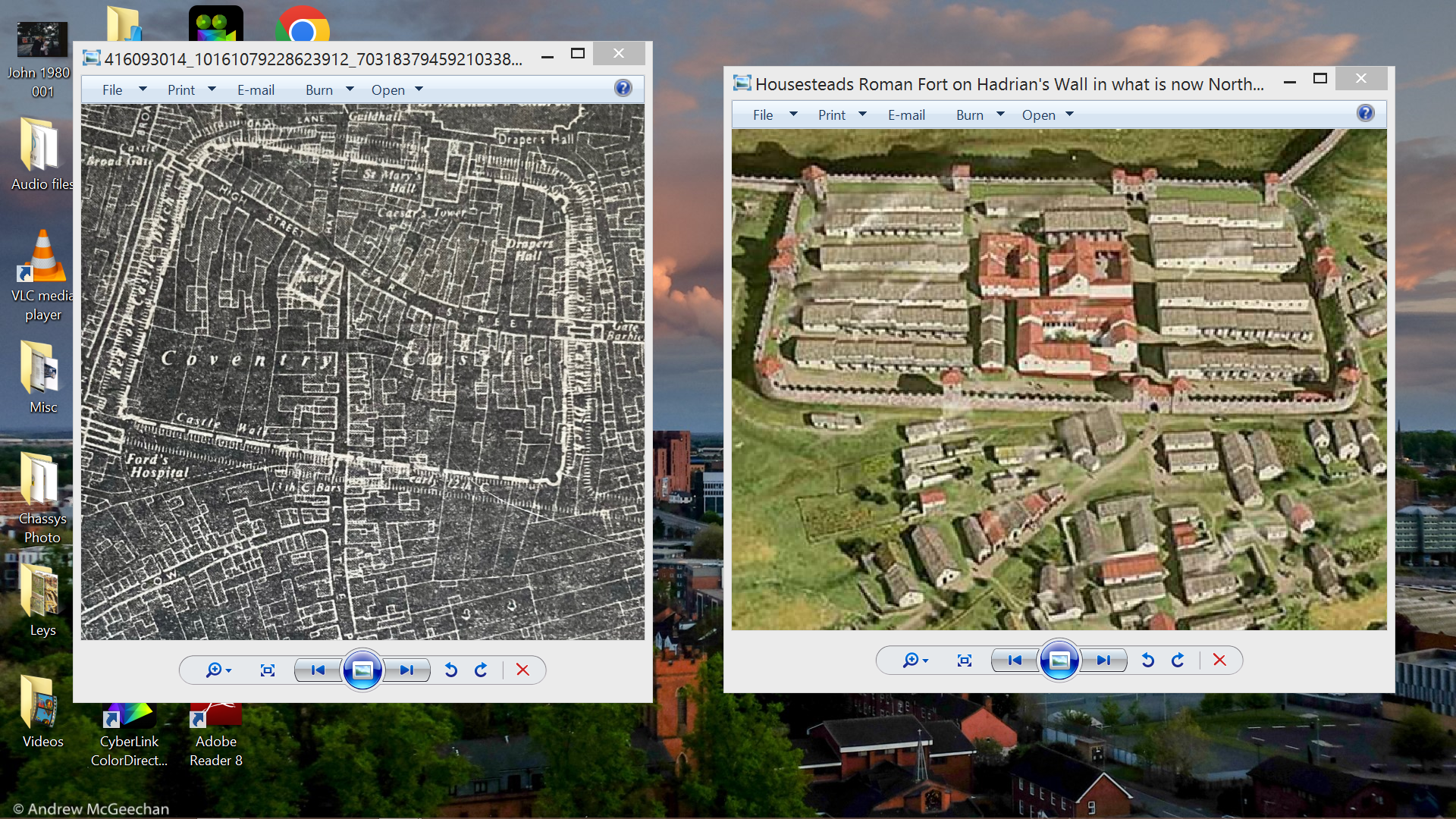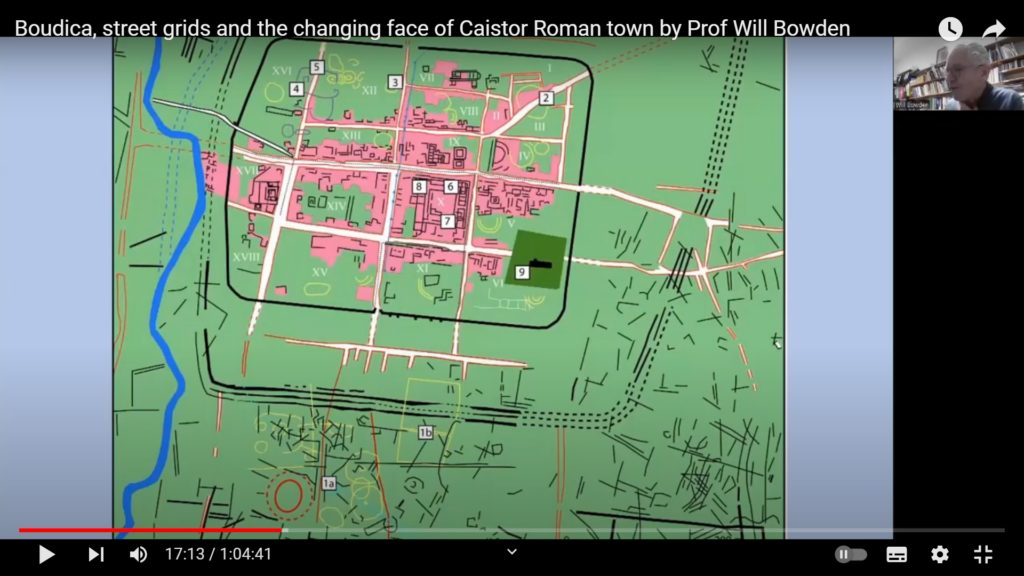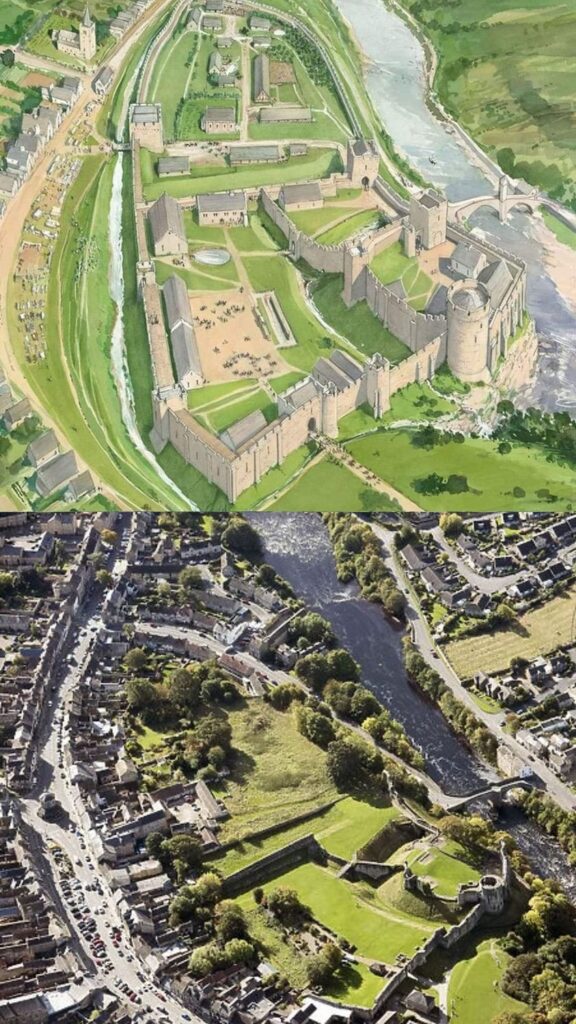Coventry Society member Andy McGeechen shares with us his controversial view that the origin of Coventry is in fact Roman and that also explains the city’s name. Andy writes…..
In this article I put it to you all that Coventry is of Roman origins, and has little, or nothing, to do with any Anglo Saxon founder such as St Osburga.
A month or so back my week started with an image on Facebook of a Roman Fort (right), and another post showing the Norman Coventry castle (left)……

……except it looked nothing like a Norman castle. What it did look like though was a Roman Venta.
A Venta is a market town usually with roads passing through.
That same evening I attended a talk by Professor Will Bowden to the Coventry and District Archeological Society at the Friends Meeting House on the subject of the fate of the Iceni after their uprising in 61 AD.
We were shown images of “Venta Icenorum” better known as Caistor by Norwich.

You will notice that the Roman plan has roads passing through the town in east/west north/south alignments, whereas Norman castles such as this one (Barnard) overlook the roads but never allow them passage through.

For a bit of fun on Facebook I asked my followers to add British place names that had “V” as the third letter, almost all were Faversham Havershams Haverings and the like – but two stood out – coVentry and daVentry, and the VENTA component fits well with Coventry as a Roman market town, albeit a small one, as according to the plan above. This now puts our foundation date back into the 2nd century AD when there was an economic boom and many settlements where upgraded, even the descendants of the rebellious Iceni benefited.
What made me receptive to such a thought ?
I had visited Leicester many times during 2023 and they are proud of their Roman heritage and print many maps and guides on the subject.These also show a pre Roman settlement (Ratae) as well.
Linguistics
CoVenta is a three syllable composite word, whereas the often suggested “Coventina” (a water goddess) is a five syllable name.
The hard “Co” element of our name may tie us to the Corieltauvi people (regional capital Rate, modern Leicester) although there was an other tribe to our north west named the Cornovii, “VENTA Cornovii” may have flipped to CornoVENTA, then CoVENTA, the TRY being a later Anglo Saxon addition. This can happen quite rapidly and history is dotted with examples of syntax flipping, for one modern example, Old Allesley Road became Allesley Old Road in little under 20 years (See OS Maps 1888 & 1906). The old form “Thames River” flips into “The River Thames” but the older form is still used in North America.
NW or NE links ?
A final thought would tie us in with the Northwest / Tamworth-Lichfield corridor, as the later christian Bishopric was of Coventry & Lichfield.
The obvious Northeast corridor link is marked by the M69 but I think we have little kinship or historic connection to Leicester.
Andrew McGeechan
